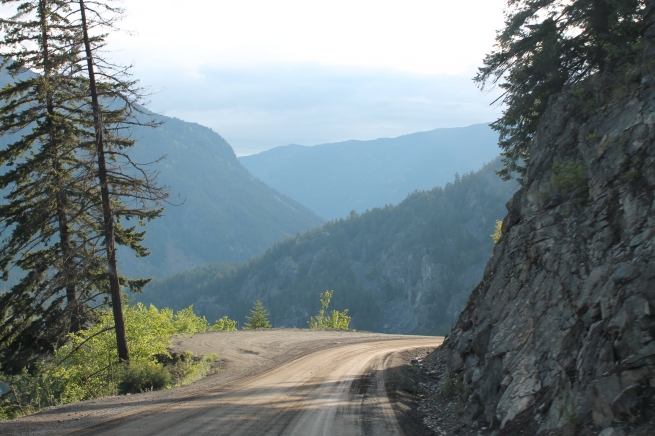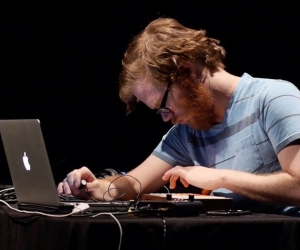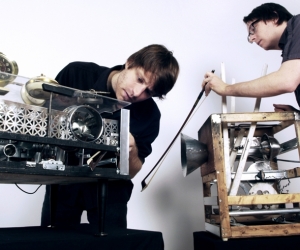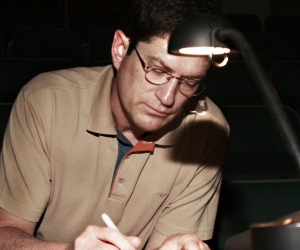
There’s no place like home. For Anna Höstman, winner of the 2013 Toronto Emerging Composer Award, home is the Bella Coola Valley, a remote wilderness wonderland on British Columbia’s central coast. Its rich cultural history dates back 10,000 years to the Nuxalkmc people (now called Nuxalk—pronounced Nu-halk), who lived in villages along its extensive and wilful waterlines. More recently, European explorers, traders, and settlers set foot in the region. Some stayed put. Höstman and her artistic collaborator Dylan Robinson, with whom she has worked frequently over the past decade, spent the past two years on an immersive journey into the languages, ancient and recent history, and evolving nature of the Bella Coola Valley. Their explorations will yield the eleven-part concert-installation work Singing the Earth—Nuyamł-ił Kulhulmx.
With the vital creative participation of Robinson, Patrick Nichelson, and mezzo soprano Marion Newman, and the support of several granting organizations and Toronto’s Continuum Contemporary Music, Höstman has been able to click her ruby-slipper heels, so to speak, and return home to explore the sonic legacy of a fascinating corner of Canadian cultural and natural history. The following is an edited version of Musicworks’ wide-ranging conversation with Höstman in the summer of 2013.
JENNIE PUNTER: Tell us a little about the Bella Coola Valley and your personal connection to it.
ANNA HÖSTMAN: My great-great grandfather was in the first group of Norwegian settlers who went to the Bella Coola Valley via Minnesota at the end of the 1800s. Some turned around and left, but he stayed with his wife, and they had a large family. Four generations of my family have lived there. So I was born there, and lived there until I was fourteen.
When I was growing up, the mountains were glacier-covered—a lot of the ice has now melted. Running through the middle of the valley is the Bella Coola River, which is very alive. It isn’t restrained, so it floods. It moves the land, and the geography changes, so it’s a very active natural phenomenon. The people who live there deal with flooding on a regular basis, as well as forest fires, and things like that.
You couldn’t drive there until the 1950s. A boat would deliver freight. Because of its isolation, the valley has retained qualities of a pristine setting that many places can’t lay claim to.
During our research, we spent an enormous amount of time travelling through the valley and interviewing wonderful people. Some I knew, others we met along the way—some of the friendliest people I’ve ever met.
How did you and Dylan develop the overall shape of work?
We knew that we wanted it to be an hour-long presentation, and that it would be for an ensemble. And we wanted to work with Marion—so it would be mezzo soprano and chamber ensemble. Continuum has been an amazing and integral part of this project from early on—the work wouldn’t be happening without their support.
We also wanted the work to be presented not just in a performance space but also as an installation, so there would be multiple ways of receiving and engaging with the material. Dylan and I like working in alternative performance situations, and with very dense, texture-laden materials—micro-details, re-use of existing materials—which lends itself well to making associations with history.
Give us a sense of your process and how you work with your collaborators—do you and Dylan take on different roles in the creative and research process?
My process feels a bit like I’m putting myself into a state of receiving, to see what I pick up along the way. Dylan lives in England, so things didn’t really start until we went to the valley together. We would go for a week or ten days—in total we spent about a month up there, in various seasons—then we would go to our separate locations and try to figure out what we had.
Neither of us is too comfortable about individual roles. Although it’s true that I am composing music, Dylan and I talk about approaches to compositions. We both worked on the conceptualization of the installation. We both took photographs, recorded video and audio, both interviewed people.
Patrick Nichelson, who has been with us every step of the way, did a lot of interviewing, transcribing, writing, photography—as well as video and audio. And he’ll be helping with setup of the installation.
Marion joined us on our first research trip. She was born in Bella Coola, so she has a connection also, and strong ties to the community. Her mom taught in Bella Coola. Because the text she will be performing is English, Norwegian, and Nuxalk, her contribution and dedication are a major part of this project.
Can you elaborate on how the Nuxalk language is used in the work?
As you know, the government was aggressive in trying to eradicate the language through the residential school system. In the late 1800s, one hundred per cent of the Nuxalk people spoke Nuxalk—by 2010, only five per cent. There’s an extraordinary young man up there, Clyde Tallio, who has been integral to the revitalization of the Nuxalk language in the valley, along with his teacher Lance Nelson. Their hope is to return the spirit of the Nuxalk to the Nuxalk peoples.
The second song in the work is a kind of glossary of flora and fauna that will be sung in a combination of English and Nuxalk. The song itself is not a narrative, it’s about naming things. Clyde talked to us about the Nuxalk word for rock, which is spoken in a way that sounds like feet being dragged over a river bed. To him, the English word rock doesn’t have the same spirit.
What is the role of Continuum ensemble?
We’re working with a septet—violin, saxophone, clarinet, accordion, piano, percussion, and bass. So there’s a real richness. There’s always been an active music community in Bella Coola—my Grandpa played sax and Dixieland clarinet— so the instruments of the ensemble also reflect that story.
FYI: Continuum Contemporary Music will present the world première of Singing the Earth—Nuyamł-ił Kulhulmx: 11 Pieces about a Place on Dec. 4, 2013 at Wychwood Theatre in Toronto, with a second performance on the 5th.
Image: The road to the Bella Coola Valley. Image by: D. Cecchetto.


